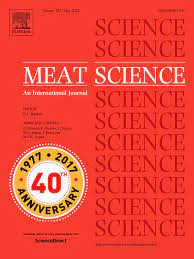Document type: scientific journal published in Meat Science
Authors: Pavan Kumar, Muideen Adewale Ahmed, Abubakar Ahmed Abubakar, Muhammad Nizam Hayat, Ubedullah Kaka, Mokrish Ajat, Yong Meng Goh, Awis Qurni Sazili
Preview: Stress induces various physiological and biochemical alterations in the animal body, which are used to assess the stress status of animals. Blood profiles, serum hormones, enzymes, and physiological conditions such as body temperature, heart, and breathing rate of animals are the most commonly used stress biomarkers in the livestock sector. Previous exposure, genetics, stress adaptation, intensity, duration, and rearing practices result in wide intra- and inter-animal variations in the expression of various stress biomarkers. The use of meat proteomics by adequately analyzing the expression of various muscle proteins such as heat shock proteins (HSPs), acute phase proteins (APPs), texture, and tenderness biomarkers help predict meat quality and stress in animals before slaughter. Thus, there is a need to identify non-invasive, rapid, and accurate stress biomarkers that can objectively assess stress in animals. The present manuscript critically reviews various aspects of stress biomarkers in animals and their application in mitigating preslaughter stress in meat production.




